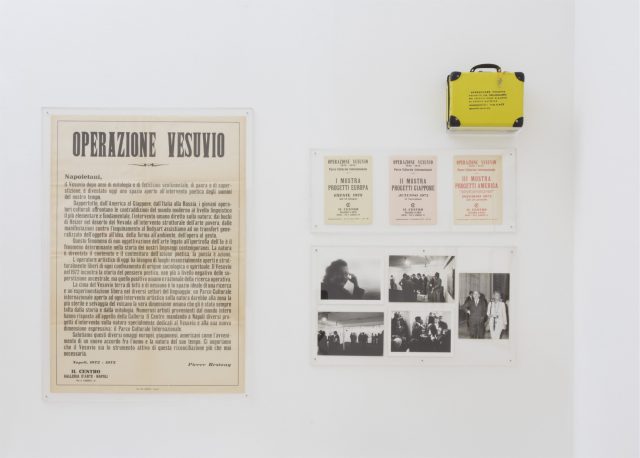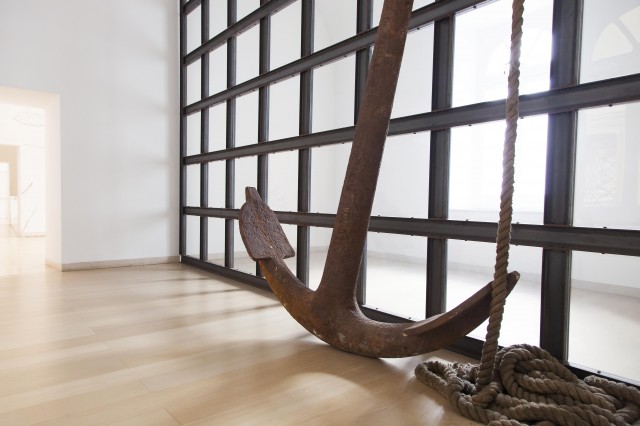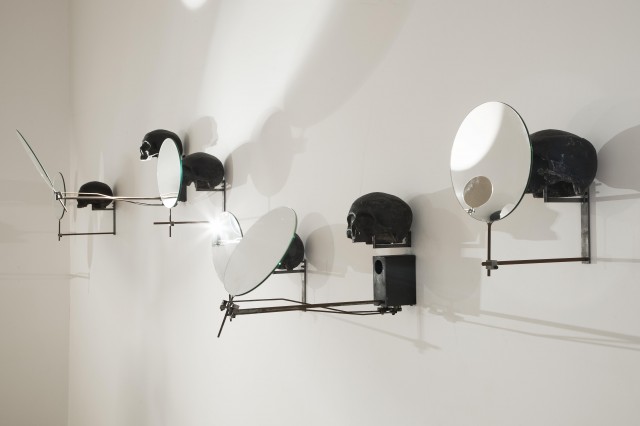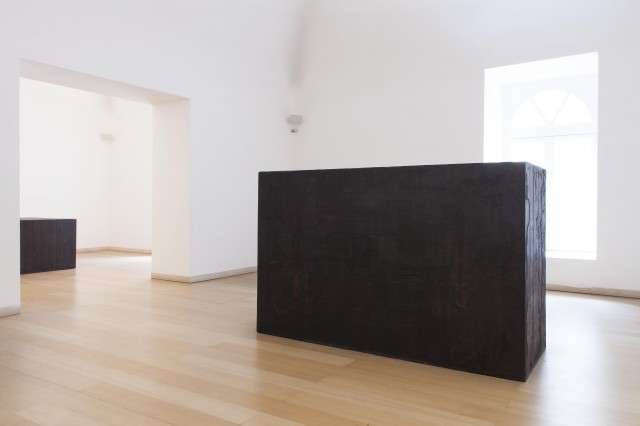In 1972 Pierre Restany proposed to the astonished Neapolitans the conversion of Vesuvius into an “International Cultural Park”, a project open to proposals from artists around the world. This event coincided with the general elections. The volcanic critic, armed with a megaphone and pickup truck, organized a false electoral campaign with the help of Gianni Pisani. These were the Land Art years, which saw “a generalized transfer from the object to the idea, from the form to the environment, from the work to the gesture” (Restany). Many artists from around the world responded enthusiastically to the appeal, sending numerous ideas for projects. The results of Operation Vesuvius were presented at three different project-exhibitions at Dina Caròla’s Galleria Il Centro in 1972-73, partly documented in the Madre’s collection.
– Operation Vesuvius – International Cultural Park – I Project- Exhibition Europe: Costa-Karahallos, Danil, Boezem, Bocola, Marocco, Raynaud, Jacquet, Baj, Tilson, Gilli, Sanejouland, Xenakis, Mari, Bertini, Minkoff, Contenotte, Luca, Luigi and Rosa Patella, Marchegiani, Pane, Szapocznikow, Neiman, Bénigne Lavier, Ruotolo, Gruppo “Continuum”, Laudisio, Panseca, Carmi, van Hoeydonck, Xerra, Rotella, Marotta, Alviani, Pozzati, César, Uriburu, Arnal, Arman, Reuterswärd, Decock, Formica, “Humor Power”, Anonimo Napoletano, Balatresi, Panaro, Mlynàrcik, Bravi, Lanza, Cristiano, Ferraro, Asnaghi, Topolino, U.F.O., Sosno, Ferro, Farhi. Selection curated by Pierre Restany
– Operation Vesuvius – International Cultural Park – II Project-Exhibition Japan: Enokura, Fukuoka, Fukushima, Hara, Isozaki, Kataoka, Kawagughi, Koshimizu, Lee, Ichiyanagi, Matsuo, Miki, Nagasawa, Sekine, Suga, Takamatsu, Tanaka, Seminar’72 group, Yamamoto, Yoshida. Selection curated by Yoshiaki Tono.
– Operation Vesuvius – International Cultural Park – III Project-Exhibition America: Christo, Newton and Harrison, Kaprow, Brecht, Oppenheim, Baxter, Armajani, Pepper, Hutchinson, Byars. Selection curated by Jan Van Der Marck.
The proposal drawn up by Giannetto Bravi (Tripoli, 1938-Cislago, 2013) for Operation Vesuvius consisted in metaphorically packing up the volcano in a valise in order to preserve it from pervasive speculation. The second phase of the project consisted of sending a series of postcards indicating the precise place where the recipient could collect “a piece of Vesuvius” to be restored to its original place when times improved.
Then followed the production of a series of briefcases in pressed cardboard with a silkscreen print, which Bravi used at the time. Valige bravi per un viaggio nel passato (“Bravi Suitcases for a Trip into the Past”) showcased a series of memories of a time gone forever, images that referred seemingly naively to the oleographs of the area. “Bravi’s suitcase can be used when traveling or out walking”, wrote Angelo Trimarco in 1971. “All other uses, however, are allowed”. Bravi in particular suggested it could be used to hold your loved one. “Evidently” added Trimarco, “one is moved to think of sadomasochistic images, of infernos and unspeakable perversions […]. There is enough, however, to enable them all (Bravi, Trimarco, Restany and viewers) to recount the dark depths of our shackles to a lurking friendly analyst”. To avert the danger, however, the notorious valises were accompanied by a set of “instructions” in the form of photographs taken by Mimmo Jodice during a documentary performance that clarified the action.
EV




